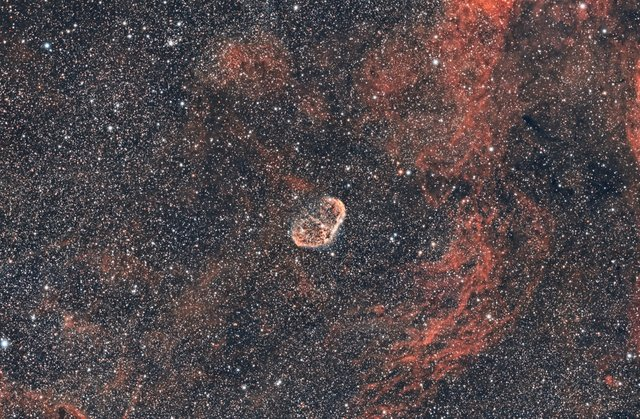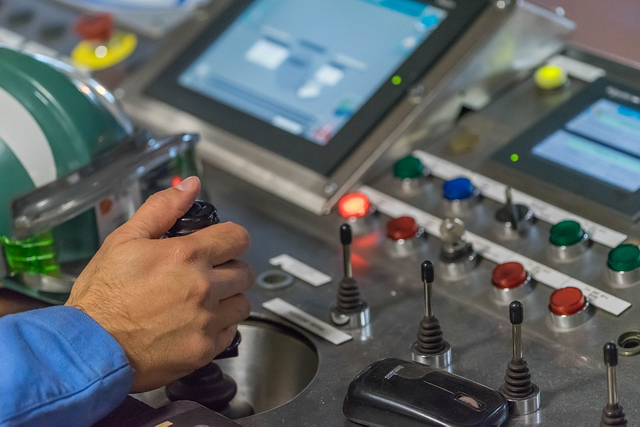Boston Dynamics' robot dog now available to order; New technique for learning about ancient animals uses protein sequences in dental enamel; The brain uses filters, not a search light, to pay attention; The continuing debate over whether political differences in the academy can be explained by self-selection. This article says, "no"; and photos of the Crescent Nebula
Fresh and Informative Content Daily: Welcome to my little corner of the blockchain
| Whatever gets my attention |
Links and micro-summaries from my 1000+ daily headlines. I filter them so you don't have to.
- Boston Dynamics' Spot Robot Dog Goes on Sale - Here is the order form. The early adopter program is targeting businesses, and the device may cost about as much as a luxury car. Boston Dynamics CEO, Marc Raibert, says it's a milestone for the company to move the quadruped into a hardened, business-ready product. The device has an average run time of 90 minutes, with a swapable battery, and it is able to navigate challenging terrain. Among other features, the company claims that the device operates at speeds up to 3 mph, has crash protection, self-rights itself after falls, has two payload ports, can carry up to 14 kg (31 pounds), and has rain and dust protection. The company will select the first customers based on whether they "either have a compelling use case or a development team that we believe can do something really interesting with the robot," and the CEO says it takes about 15 seconds to learn to operate the robot with a controller like a gaming joystick. Possible uses "include performing remote data collection and light manipulation in construction sites; monitoring sensors and infrastructure at oil and gas sites; and carrying out dangerous missions such as bomb disposal and hazmat inspections. There are also other promising areas such as security, package delivery, and even entertainment." Click into the article for more details and a video of a robotic biped doing gymnastics moves.
Here is the Spot promo video:
This Ancient Tooth Could Shake Up How We Study Evolution - According to SciShow News, on Youtube, a recent Nature article reports that scientists were able to get DNA from teeth that were up to 1.7 million years old. This led to some interesting insights about the animals they study, but more importantly, the method may be applicable to finds that are older by a factor of 10. The video says that even though DNA doesn't last anywhere near long enough, the researchers were able to use protein sequences to learn about the DNA. This technique has been tried before on dinosaur bones, but the findings were too generic to be useful. The break through here was accomplished by analyzing the protein sequences from tooth enamel, instead of bone. Tooth enamel contains some of the "toughest protein sequences that we know of. h/t RealClear Science
To Pay Attention, the Brain Uses Filters, Not a Spotlight - For decades,
researchers have studied the brain to explain attention by finding the processes that it uses to make the inputs of interest stand out from the rest of the sensory information that is bombarding it at the same time. Only recently have they begun studying to see how the brain suppresses irrelevant information instead. Through this change in perspective, the article says that scientists are slowly gaining understanding of how mind and body are inextricably linked by "automatic sensory experiences, physical movements and higher-level consciousness". The article points to work by MIT researcher, Michael Halassa who studies inhibitory neurons that accomplish gating and filtering in the brain. The article notes that Halassa and his team have now identified the full inhibitory circuit. It says, "The full circuit, they found, goes from the prefrontal cortex to a much deeper structure called the basal ganglia (often associated with motor control and a host of other functions), then to the TRN (thalamic reticular nucleus) and the thalamus, before finally going back up to higher cortical regions." The article also notes that filtering starts earlier than previously imagined, quoting Princeton neuroscientist, Ian Fiebelkorn, saying "filtering is starting at that very first step, before the information even reaches the visual cortex.". Fiebelkorn also said that in order to compensate for the possibility of filtering out relevant information, the level of filtering pulses or blinks - about four times per second. (Sounds like interrupt handling in a computer operating system...) This knowledge has overall implications on how we understand the brain, since it demonstrates that more areas then just the cerebral cortex are deeply involved in attentional processes. In a related tangent, the involvement of the basal ganglia implicates the motor system and perception in the attentional processes, which leads to work by Helen Slagter at VU University Amsterdam,
who is studying the role that the basal ganglia might play in consciousness.
Political Disparities in the Academy: It’s More than Self-Selection - A recent study by John Paul Wright demonstrated that in the American university system, Republicans are virtually absent in some fields, and completely absent in some universities. In the social sciences, the ratio of liberal-to-conservative runs anywhere from 40:1 to 100:1. Many argue that this is explained because conservatives just aren't attracted to work in the social sciences. Turning to older data, however, Wright points out that many of the faculty had transitioned from Republican to Democrat, and that the more heavily a field was dominated by Democrats, the more likely a person was to switch. Based on that observation, the article argues that certain academic fields have created environments that are only attractive to certain groups of people, while they actively drive others away, so it's not really accurate to describe the phenomenon as self-selection. This is important, he says, because the higher education system depends on social legitimacy, but a large number of people are starting to question the value of college. The article suggests that deescalating the tribal impulses in higher education may help to restore some of its lost legitimacy.
STEEM The Crescent Nebula - Here is another astrophotography post by @astrophoto.kevin. Discovered in 1792 by William herschel, The Crescent Nebula is another one in the constellation of Cygnus. It is centered around the Wolf-Rayet Star WR-136, which is releasing ionized hydrogen and oxygen gases. The ionization causes it to emit light in the visible wavelenghts. Like all Wolf-Rayet stars, WR-136 is the remaining nucleus of a massive star. Some Wolf-Rayet stars, like WR-136 are still emitting their gases, whereas others have already emitted them all. The post says that photos are free to use with credit, so here's one of them:
click to enlarge

Click through for more photos and a more detailed description.
In order to help make Steem the go to place for timely information on diverse topics, I invite you to discuss any of these links in the comments and/or your own response post.
Beneficiaries
My other open posts
(as of Tuesday evening)
- Curating the Internet: Science and technology micro-summaries for September 24, 2019
- Curating the Internet: Business, leadership, and management micro-summaries for September 24, 2019
- Curating the Internet: Science and technology micro-summaries for September 22, 2019
- Curating the Internet: Business, leadership, and management micro-summaries for September 22, 2019
- Curating the Internet: Science and technology micro-summaries for September 21, 2019
- Curating the Internet: Business, leadership, and management micro-summaries for September 21, 2019
- Curating the Internet: Science and technology micro-summaries for September 20, 2019
- Curating the Internet: Science and technology micro-summaries for September 19, 2019
- Curating the Internet: Business, leadership, and management micro-summaries for September 19, 2019
Sharing a link does not imply endorsement or agreement, and I receive no incentives for sharing from any of the content creators.
Follow on steem: @remlaps-lite, @remlaps
If you are not on Steem yet, you can follow through RSS: remlaps-lite, remlaps.
Thanks to SteemRSS from philipkoon, doriitamar, and torrey.blog for the Steem RSS feeds!


Fantastic technology.
Downvoting a post can decrease pending rewards and make it less visible. Common reasons:
Submit